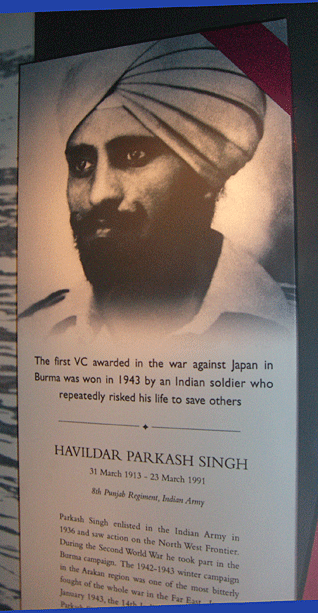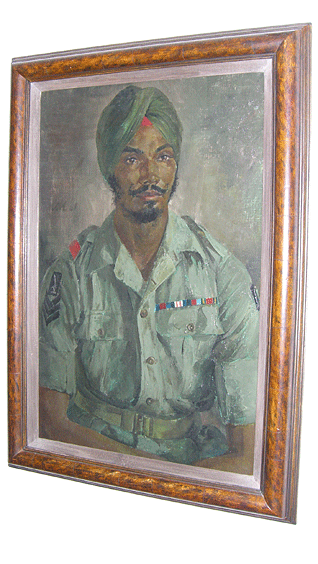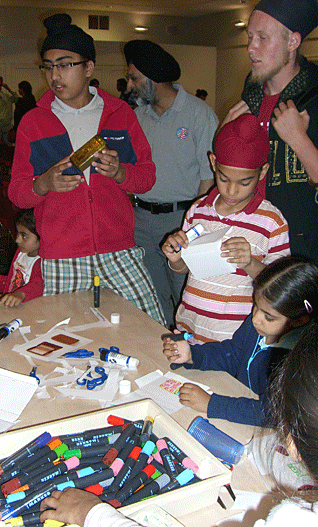Travel
Portraits in Courage:
A Pilgrim Through Sikh-British Heritage -
Part V
T. SHER SINGH
The following is republished from our archives:
PART V
The morning's papers carry a picture of an exuberant Sikh young man, in patka and beard, almost flying in the air. The television screen emanates whoops of joy from him and his cricket team-mates.
It is England's legendary spin-bowler, Mudhsuden "Monty" Singh Panesar!
Is this pure coincidence, or has all of this been orchestrated by the host country to impress the Sikhs who are in town from around the world for the inaugural Anglo-Sikh Heritage Tour?
One headline proclaims: "Monty in Command: Led by Panesar, England Demolish South Africa!"
Another shouts: "Monty's Zoomer: Hats Off to Nation's Hero!"
Amidst all of this, the morning's itinerary takes us to a magnificent complex that has had a notorious history: it was once known as Bedlam, lending the word to the English language, meaning chaos and anarchy - as a result of its past incarnation as an infamous insane asylum!
Today, it is the majestic Imperial War Museum, dedicated not to celebrating conflict, but to honouring those who find themselves thrust into its path and become reluctant heroes.
Two gargantuan guns greet you at its main entrance - reminding you of the screen version of Alistair Maclean's The Guns of Navarone, in which, you'll recall, Gregory Peck, David Niven ... and ah, yes, Anthony Quinn, saved us from the evil machinations of the Nazis.
[Now that I think of it, the scene depicting the torture by the Nazi SS of the Anthony Quayle character, pales into amateurish and boy-scout games if you compare it with what our American friends have recently been up to in Abu Ghraib and Guantanamo. It now appears that the vile SS could've learned a few neat things from our three amigos - Dubya, Cheney and Rumsfeld!]
Dr James Taylor shepherds us into a conference room where his staff has laid out a special exhibition of photographs from the two World Wars, showing Sikhs serving in several fronts. And then, a special documentary short adds a new dimension to our existing knowledge of the extraordinary valour shown by Sikh troops throughout.
All the fancy Hollywood versions of the two World Wars portray meticulous and, sometimes, even fictitious and wildly imagined feats by British and American soldiers, while totally glossing over or even ignoring the central role played by Sikh and other soldiers in key fronts.
Simple examples: The Bridge on the River Kwai does not depict a single Sikh soldier. There's lots of Alec Guinness and William Holden, but where are the real-life Singhs who actually did it all?
In reality, the Burmese campaign, extending into Thailand and beyond, had hundreds of thousands of Sikhs who gave their all to help the Allies.
The Longest Day has the likes of John Wayne and Robert Mitchum ... in fact, it appears, the entire roster of handsome actors from Hollywood. And, not a mention of the sacrifices of the Sikhs in each and every battlefront.
In the award-winning Gallipoli, there's not a mention of the historical and crucial role played by the Sikhs in the battle. The film was Australian, and all the glory is misappropriated by ... yes, the Australians.
In addition to the actual fighting, have you ever wondered who dug the trenches on the fronts ... the very same ones in which Hollywood acts out such extraordinary exploits of daring and selflessness? And who placed the huge coils of barbed-wire fencing - miles and miles of it - in the very thick of the fighting lines?
The documentary film we're shown has actual footage and graphic detail of the actual work done by Sikh sappers!
These scenes never show up in the movies that romance the involvement of the Europeans and the Americans - except, I must admit, once: in Anthony Mighella's version of Michael Ondaatje's The English Patient, with Naveen Andrews as a Sikh sapper on the Italian front.
We hear a lecture on the Burma Campaign of 1942-45, leading up to a brief history of the famed Victoria Cross, and the hair-raising details of why Havildar Parkash Singh (later made Major) was awarded the Victoria Cross in 1943 for his feats in Burma.
[Though eligible for the honour only between 1913 and 1947, Sikh soldiers were the recipients of the Victoria Cross in larger numbers than any other community or soldiery, if one looks at the population of the Sikh minority.]
The Museum staff has graciously organized an activity corner for the younger children of the group. They get to learn about the gift boxes that were periodically sent out to the troops on the front during the Wars, and then have an opportunity to fashion some of their own, and letting their imagination wander as to what they would like to have included in those boxes to Sikh troops in the trenches: Mithaai? Pinnis? Gajrela? Gutka? Karra? Kangha?
Heading into the main halls and the primary exhibits of the Museum, we discover that Victoria Cross awardee Parkash Singh survived the war and settled down in Ealing (London, England), where he died at a ripe age in 1991.
We find his karra and medals - including his Victoria Cross - on display.
And while making our way through Spitfires and Lancasters, German U2's, tanks and troop carriers, we come across sombre faced Gurbaksh Singh staring at us, grim and determined, from a superb oil painting.
Around the corner is a larger than life - in more ways than one - black-and-white photograph of a machine-gun toting young Sardar.
Nothing I've ever seen anywhere captures the spirit of the World Wars and what our young gave in the service of humanity, as this single image does, towering here over us! [Please see top photo.]
The sheer resolve in his eyes. The commitment. The determination. The daring. The challenge. The weight and the burden. The dedication. The unwavering eagle-eye.
I hear my friend, Birinder Singh Ahluwalia, mutter under his breath, as he stands beside me equally in awe: "God help the first enemy that crosses his path!"
Look at him and you can instantly envision the idea and import of "savaa lakh"!
To Be Continued ...
First published on July 20, 2008; republished on October 16, 2014
Conversation about this article
1: Pritam Singh Grewal (Canada), July 20, 2008, 12:01 PM.
I enjoy reading T.Sher Singh's nicely illustrated and very informative "Heritage Tour" series. I may add that I could find from various websites the names of at least five Sikh Victoria Cross winners. They are- Isher Singh, Gian Singh, Karamjit Singh Judge, Parkash Singh and Nand Singh.
2: Roopinder Singh Bains (Surrey, British Columbia, Canada), July 21, 2008, 12:49 PM.
It is about time that there was a movie about the role of the Sikhs in the Gallipoli war.
3: Singhdicate (Toronto, Canada), July 21, 2008, 4:32 PM.
The Imperial War Museum is a must see when visiting London. The highlight for me was the inter-active WW1 trench ... a chilling insight into trench warfare ... surely hell on earth for those Sikh Regiments arriving in late October 1914 to save the British, the french and their allies.
4: H.S.Nanda (United Kingdom), August 12, 2008, 1:35 PM.
The Battle of Saragarhi needs to be mentioned - apparently a Bollywood movie is now in the pipeline. Also, Monte Cassino in Italy, where the Sikhs held off the Germans; guess what happened when the British troops relieved the Sikhs from their positions....? Yep, they lost the hill to the Germans! And, how about "The Black Lions" who took over Mesopotamia and charged up the Euphrates River.






